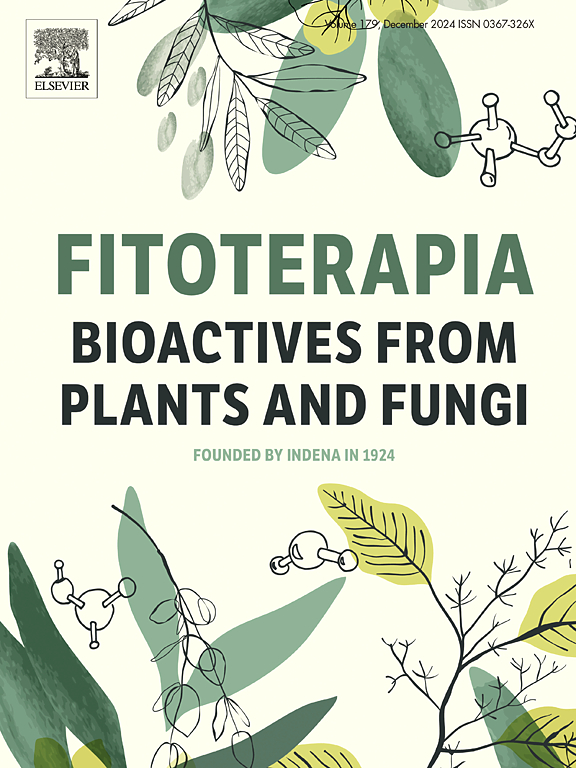Exploring the molecular mechanism of Chinese herbal extracts used to improve skin wound healing
IF 2.6
3区 医学
Q3 CHEMISTRY, MEDICINAL
引用次数: 0
Abstract
This study investigates the chemical composition and therapeutic mechanisms of Compound Pyocutaneous Liniments (CPL), a traditional Chinese medicine, in treating skin ulcers. Using UPLC-Q-Orbitrap-MS, 66 bioactive components were identified, including flavonoids, phenylpropanoids, and anthraquinones. Acute oral toxicity tests demonstrated that CPL has high safety within the tested dose range. Skin irritation tests revealed that CPL does not cause skin irritation. In a rat skin ulcer model, CPL significantly accelerated wound healing, enhanced collagen deposition, and upregulated CD34, VEGF, and EGF expression. Serum and skin metabolomics revealed CPL's regulation of glycerophospholipid and sphingolipid metabolism. Network pharmacology predicted TNF, AKT1, and EGFR as core targets, with pathways such as EGFR tyrosine kinase inhibitor resistance and VEGF signaling implicated. Molecular docking validated strong interactions between CPL components (e.g., luteolin) and these targets. These findings demonstrate CPL's multi-component, multi-target, and multi-pathway mechanisms, supporting its clinical application for skin ulcers.

探讨中药提取物促进皮肤创面愈合的分子机制。
研究中药复方化皮搽剂(CPL)治疗皮肤溃疡的化学成分及作用机制。利用UPLC-Q-Orbitrap-MS,鉴定出66种活性成分,包括黄酮类化合物、苯丙类化合物和蒽醌类化合物。急性口服毒性试验表明,CPL在试验剂量范围内具有较高的安全性。皮肤刺激试验显示,CPL不会引起皮肤刺激。在大鼠皮肤溃疡模型中,CPL显著加速伤口愈合,增强胶原沉积,上调CD34、VEGF和EGF的表达。血清和皮肤代谢组学显示CPL调节甘油磷脂和鞘脂代谢。网络药理学预测TNF、AKT1和EGFR是核心靶点,包括EGFR酪氨酸激酶抑制剂耐药和VEGF信号通路。分子对接验证了CPL成分(如木犀草素)与这些靶标之间的强相互作用。这些发现证明了CPL的多组分、多靶点和多途径机制,支持其在皮肤溃疡中的临床应用。
本文章由计算机程序翻译,如有差异,请以英文原文为准。
求助全文
约1分钟内获得全文
求助全文
来源期刊

Fitoterapia
医学-药学
CiteScore
5.80
自引率
2.90%
发文量
198
审稿时长
1.5 months
期刊介绍:
Fitoterapia is a Journal dedicated to medicinal plants and to bioactive natural products of plant origin. It publishes original contributions in seven major areas:
1. Characterization of active ingredients of medicinal plants
2. Development of standardization method for bioactive plant extracts and natural products
3. Identification of bioactivity in plant extracts
4. Identification of targets and mechanism of activity of plant extracts
5. Production and genomic characterization of medicinal plants biomass
6. Chemistry and biochemistry of bioactive natural products of plant origin
7. Critical reviews of the historical, clinical and legal status of medicinal plants, and accounts on topical issues.
 求助内容:
求助内容: 应助结果提醒方式:
应助结果提醒方式:


